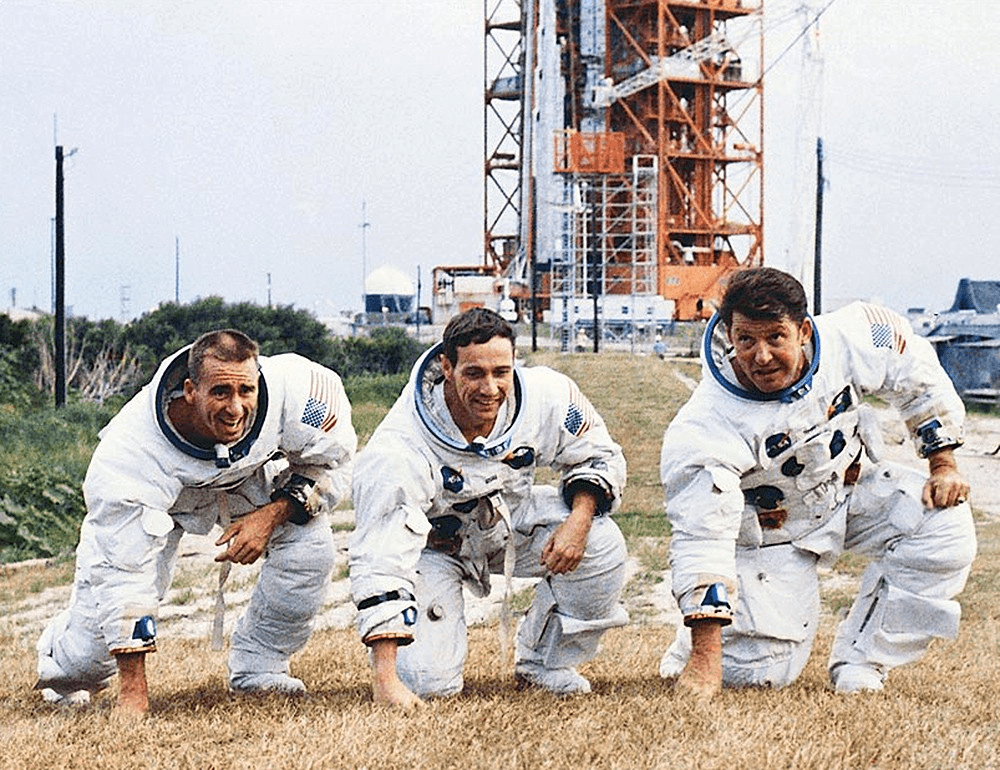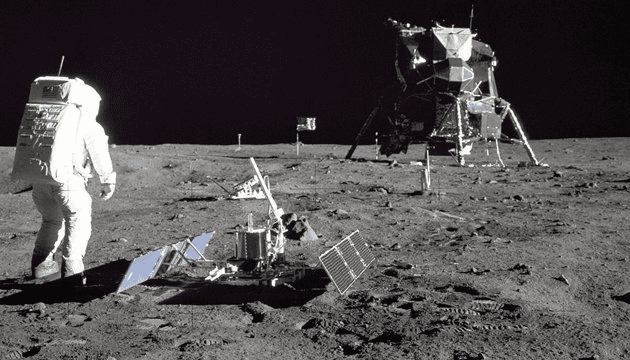More than 50 years ago, Apollo 11 was launched from the Kennedy Space Center on Merritt Island, Florida. However, the command module that transported the astronauts to the Moon and back was manufactured in Downey, California (a city in southern Los Angeles County). A replica can now be found near the Columbia Memorial Space Center. Find more information at la-future.
The Apollo program
Before the Space Race of the 1960s, aeronautics employees constructed airplanes in Downey. During World War II, the little town was critical in providing allied forces with planes and units.
NASA’s mission to land humans on the moon in the 1960s and early 1970s was known as the Apollo program. The success of Apollo 11, which carried people to the lunar surface for the first time in history, allowed the United States to declare victory in the Cold War space race against the Soviet Union.
There have been 11 space missions since 1961 as part of the Apollo program, six of which successfully landed astronauts on the moon and four of which tested equipment. The first crewed flight occurred in 1968, and the last mission occurred in 1972.
At the conclusion of the Apollo program, 12 astronauts walked or roamed the Moon’s surface, doing research and gathering rocks to return to Earth-based experts. More than 50 years after they were obtained, these materials are still being utilized to make fresh discoveries.
The first Apollo experiments were carried out using the Saturn I rocket, a scaled-down prototype of the Saturn V designed to test the program’s engines and other hardware. The first astronauts were scheduled to fly on Apollo 1, but during the launch rehearsal, a spark in the cables ignited a fire that spread throughout the command module, killing three crew members.
The failure was a watershed point for the program, prompting major revisions to the command module. It took more than 18 months for NASA to try again to take humans into space. During this period, the agency undertook six crewed flights to examine the Saturn V rocket’s characteristics.
The first humans on the Moon

The primary objective of Apollo 11 was to land the crew on the Moon and return to Earth (the national goal established by President John F. Kennedy on May 25, 1961).
On July 16, 1969, Apollo 11 launched from Cape Kennedy with commander Neil Armstrong, command module pilot Michael Collins and lunar module pilot Edwin Aldrin into low-Earth orbit. Approximately 650 million people saw Armstrong on television and heard his voice as he described the event in which he made “…one small step for man, one giant leap for mankind.”
On July 21, 1969, at 02:56 a.m., American astronaut Neil Armstrong became the first person to set foot on the Moon. He dropped from the Apollo 11 lunar module to the moon’s surface at a mare known as the Sea of Tranquility.
With the words “Houston, Tranquility Base here. The Eagle has landed,” Armstrong reported the lunar module’s successful landing.
An hour later, Armstrong was joined by lunar module pilot Edwin “Buzz” Aldrin. Before raising the US flag, two colleagues gathered data and soil samples. They also revealed a plaque bearing President Richard Nixon’s signature and the inscription:
“Here men from the planet Earth first set foot upon the Moon. July 1969, A.D. We came in peace for all mankind.”
While Aldrin and Armstrong were gathering samples, Michael Collins informed mission control that the mothership “Columbia” had successfully circled the Moon.
Aldrin took panoramic photos of the landing site for the Bootprint Penetration Experiment and unintentionally captured one of the few photographs of Armstrong on the surface as he packed a huge sample into MESA.
Getting back home

When the astronauts left the moon, they aired a 15-minute broadcast to Earth. The astronauts turned the camera to the cockpit, and Armstrong revealed two boxes carrying valuable samples of lunar rocks and debris. They demonstrated cooking on their spaceship. Aldrin displayed the operation of gyroscopes, and Collins demonstrated the behavior of liquids in zero gravity. They concluded the broadcast by showing the Earth to the viewers. They then arranged a 10-hour rest.
During the following 12-minute televised broadcast, the astronauts discussed the voyage. Collins emphasized the flight’s intricacy and the dedication of hundreds of personnel who made it all possible. Aldrin suggested that flight represents not just the effort done but also the natural human desire to explore. In closing, Armstrong thanked everyone involved in the building of Apollo 11 and especially the people who constructed their spacecraft.
After the astronauts had safely returned to Earth, everyone lit cigars and waved American flags while cheering. President John F. Kennedy’s words from his appeal to Congress in May 1961, in which the country committed to achieving the goal of “landing a man on the Moon and returning him safely to Earth by the end of this decade,” were displayed on one screen, and Apollo 11 with the inscription “TASK ACCOMPLISHED, July 1969” was displayed on the other.
Things we need to know about Neil Armstrong

Neil Armstrong was born in Wapakoneta, Ohio, on August 5, 1930. Neil, an honorary Boy Scout, had been interested in aviation since childhood and obtained his pilot’s license on his 16th birthday in 1946. He knew how to fly an airplane before he could drive a car. The next year, he enrolled at Purdue University in Indiana to study aeronautics.
Then, on January 26, 1949, he was called up for military duty. In August 1950, he took part in air battles during the Korean War. After multiple missions, he departed the Navy on August 23, 1952, to restart his studies at Purdue University. In 1955, Armstrong received a degree in aviation engineering.
Neil Armstrong joined NACA (which was the predecessor to NASA) in order to become a test pilot. He was chosen for many initiatives between 1958 and 1962 that would eventually lead to the training of future astronauts. On September 13, 1962, after quitting his position as a test pilot, NASA picked him for Astronaut Group 2. He then went on to train as an astronaut there. Following the speech of US President John Fitzgerald Kennedy, who planned to send a man to the Moon by the end of the decade, the Gemini and Apollo projects were developed.
At the height of the Cold War, the United States wanted to surpass the Soviet Union, which had sent the first man into space, Yuri Gagarin, on April 12, 1961. Following that, the two superpowers began a space race.
Armstrong’s life after becoming an international hero

Armstrong was appointed commander for the Gemini 8 mission, which launched on March 16, 1966. The flight to orbit went perfectly, but then the mission was interrupted due to a technical malfunction. Back on Earth, Neil Armstrong was chosen as one of the astronauts to participate in the very first lunar mission.
Neil Armstrong was named commander of the Apollo 11 mission. After returning to Earth, Armstrong resigned from NASA in 1971 and became a professor of aerospace engineering at the University of Cincinnati. From 1992 to 2002, he served as president of the avionics company AIL Technologies.
Neil Armstrong died in Cincinnati on August 25, 2012, as a consequence of complications after cardiac surgery. The most renowned astronaut in history, Neil Armstrong, has died at the age of 82. His ashes were scattered over the Atlantic Ocean by the US Navy during a ceremony.


